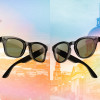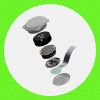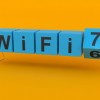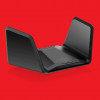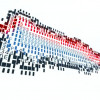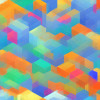Researchers envision 3-D hologram phone
It's an idea that was popularized by Princess Leia's plea for help in Star Wars: sending a 3-D hologram.
Now, two Japanese scientists have developed technology they hope will one day turn the humble telephone booth into a high-tech chamber for beaming holographic images.
At a Tokyo University laboratory, a woman stands inside a booth where a 360-degree digital camera surrounding her face sends data to a cylindrical tube. Soon, she appears to be staring out from the tube. Viewed from the side, only the side of her head is visible. Go round to the back, and only her hair can be seen.
"We can see the 3-D image as if it's inside the cylinder," said Susumu Tachi, a Tokyo University professor of computer science and physics, in a demonstration Wednesday for The Associated Press. With the device, "we can have a family gathering or conference at a remote place."
Tachi and Tomohiro Endo developed the cylinder -- dubbed SeeLinder -- by combining fiber optics, electronics and white light-emitting diodes, or LEDs.
The hologram cylinder resembles a zoetrope, a primitive motion-picture wheel.














































